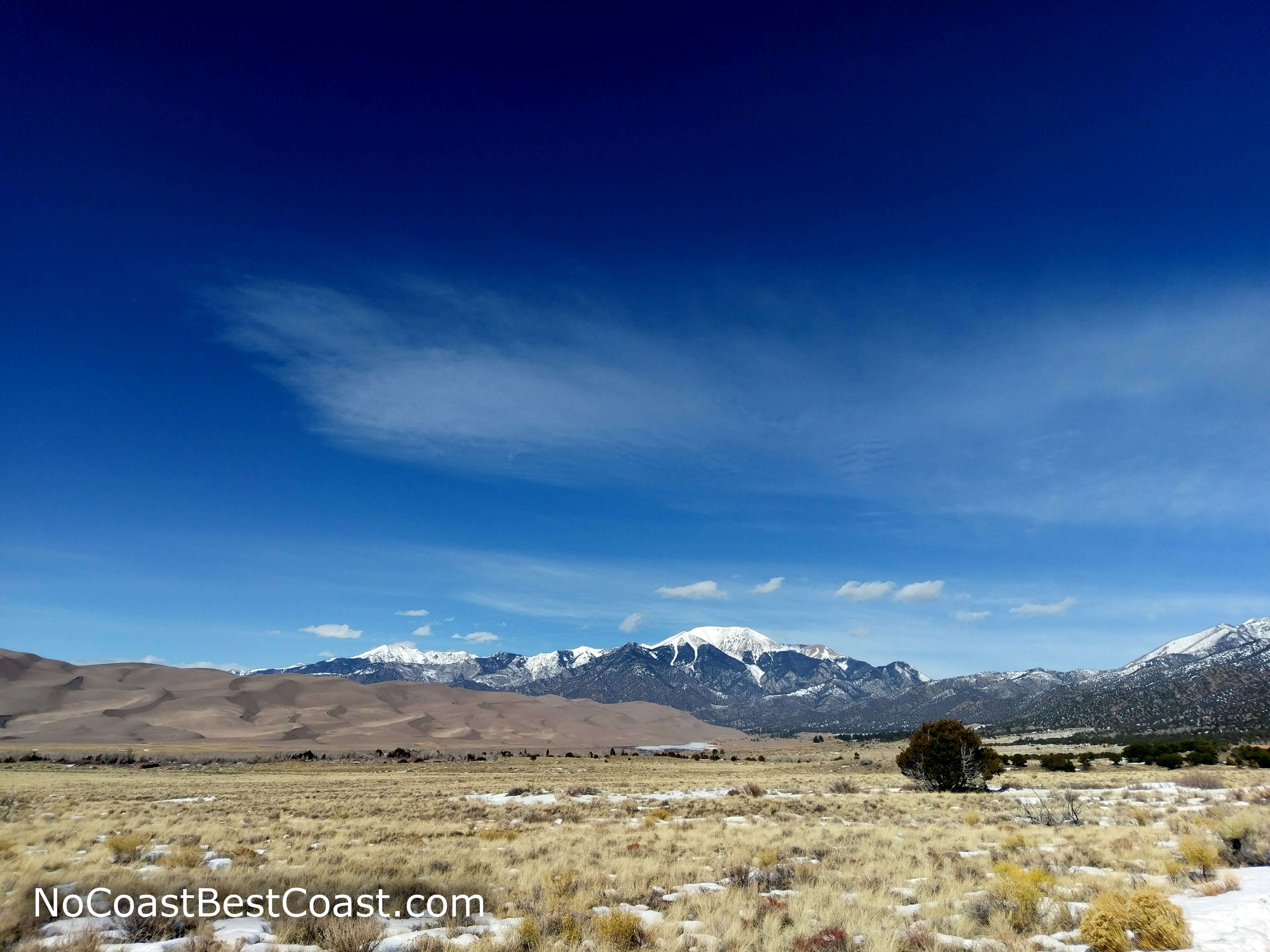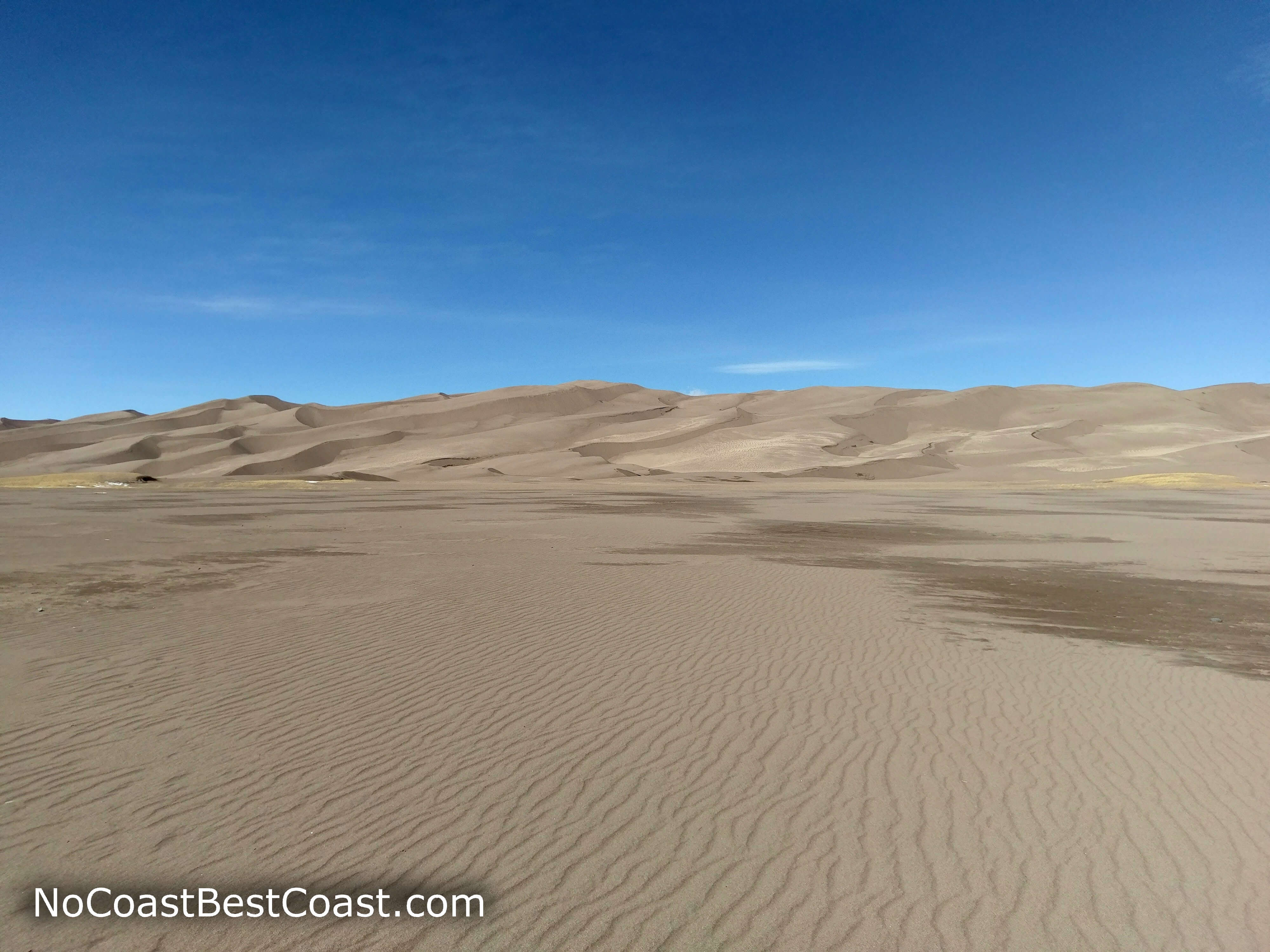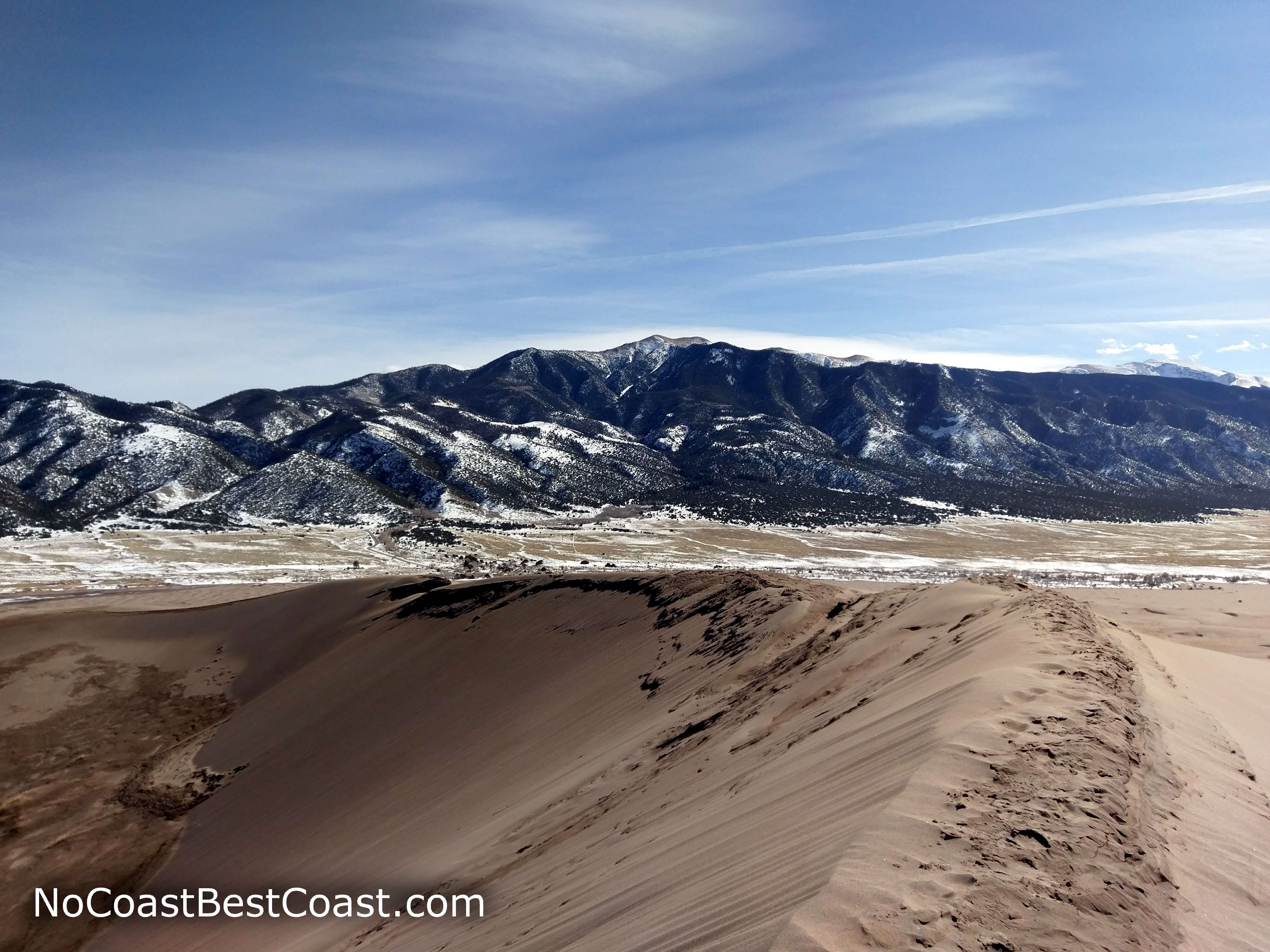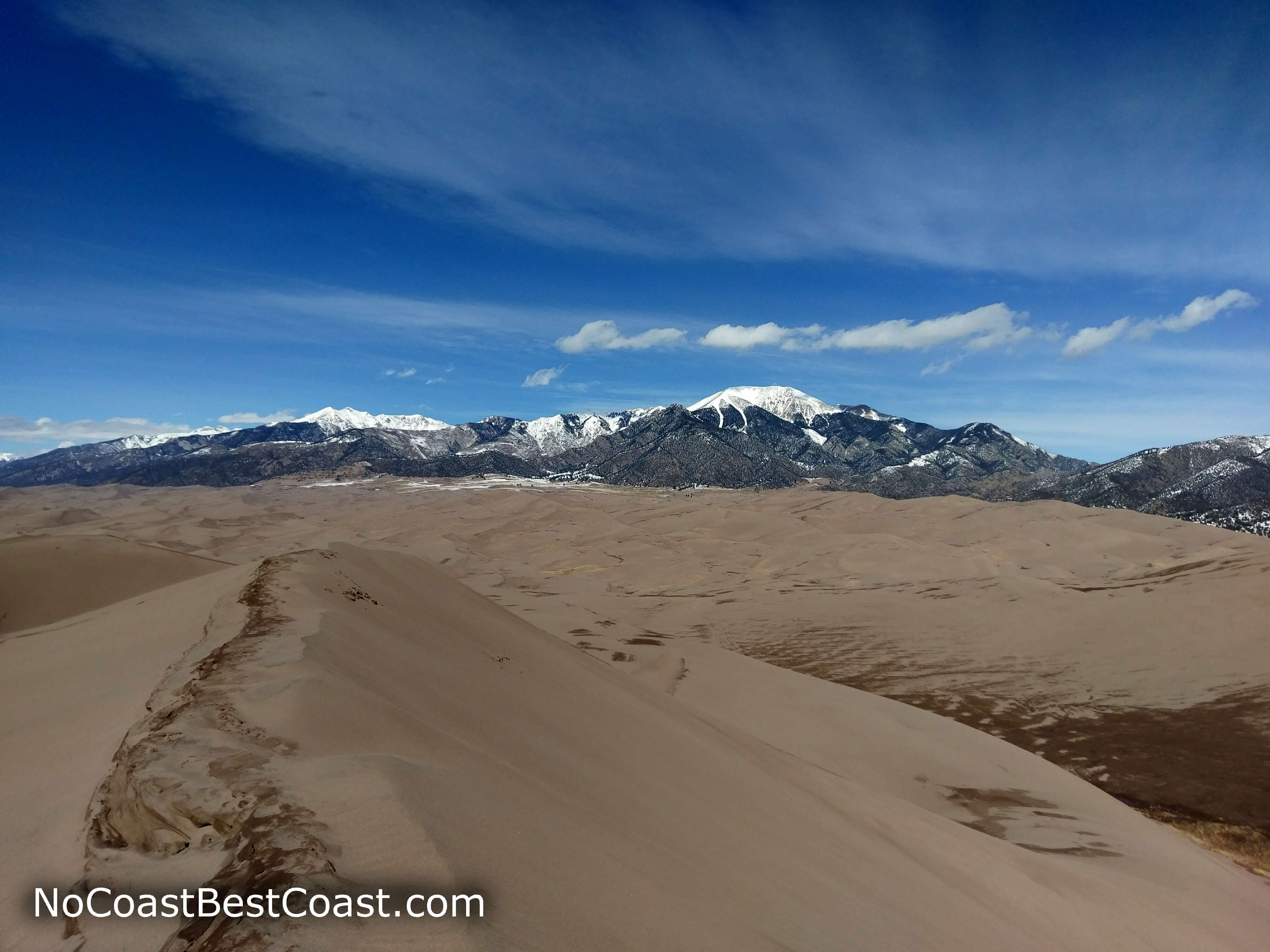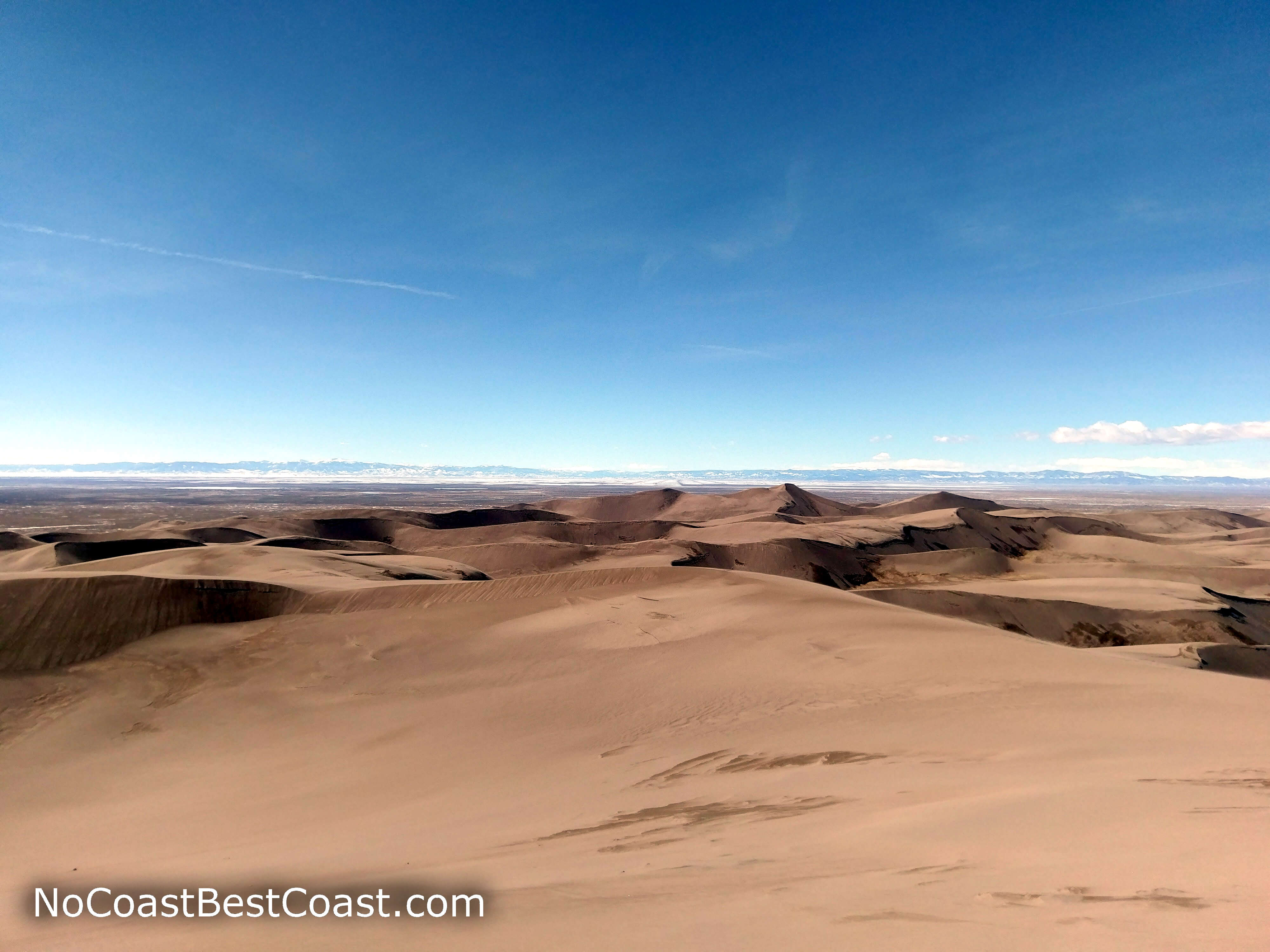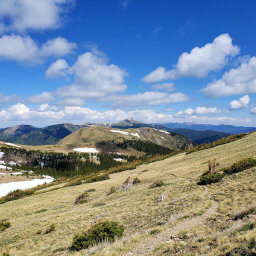| Rating | ★★★★★(5/5) |
| Overall Difficulty | Moderate |
| Navigation Difficulty | Medium |
| Distance | 2 miles roundtrip |
| Time | 2 hours |
| Terrain | Strenuous climbing, 700 feet of elevation gain |
| Best Seasons | Spring, Fall, Winter |
| Dog Friendly | Yes |
| Accessible | No |
Highlights
- Exploring miles of sand dunes
- Views from the top of one of the highest dunes
Hike Summary
Great Sand Dunes National Park and Preserve offers the interesting juxtaposition of sand and snowy mountains (for those like me who answer both when asked beach or mountains), as shown in the picture below taken along the road to the park. The best way to experience the park is to travel into the trail-free dunefield, and the perfect destination is High Dune, one of the tallest dunes rising 700 feet above the scrub-covered basin (it falsely appears to be the tallest dune when looking from afar). From the top, you'll enjoy panoramic views of the dunes and surrounding mountains. Even if you don't think you can make it to the top, it's still worth an attempt just to get a better vantage point and then run or skip down the cushioned, sandy slopes.
From the parking lot, you'll cross Medano Creek and walk about a half mile to the base of the dunes. The amount of water in the creek and difficulty of crossing varies depending on season and rainfall, but generally the creek is pretty low. Once across the creek, you'll enter a flat area coated in sand, whipped by wind as evidenced by the ripples pictured below. Travel will become really difficult once you start walking on the dunes. Especially on steeper parts, it seems like you descend one step every two steps you take! While there isn't a defined trail, following the footsteps of previous hikers is the easiest way to navigate to High Dune. If you think you're on the wrong track, simply climb to the top of a dune (like pictured below) and look for the highest point you can see. It's also likely that many people will be making this same journey, with a congregation on top of High Dune. Climbing up sand is very difficult, so pace yourself and take breaks to enjoy the scenery! After your arduous trek to the top of High Dune, you can really start to comprehend how gigantic this dunefield is as it stretches to the Sangre de Cristo Mountains shown in the first picture below. To the west towards Alamosa, you can see the San Juan Mountains in the far distance above the horizon, as shown in the second picture below. On your way down the dune, I encourage you to run or skip -- I like to think it feels like walking on the moon. You may hear a squeaking or booming sound as you step down, which is a unique feature of these dunes not found in most piles of sand elsewhere. For most, climbing High Dune is good enough, but for those obsessed with climbing the tallest of everything, Star Dune is 100 feet higher. I myself intended on hiking to Star Dune, but once on top of High Dune I had no idea where to go -- nowhere else looked taller. All I had was my park map, which was not good enough for navigational purposes, so I turned back. If you want to reach Star Dune, bring a real topographic map and/or GPS.Despite the disappointment of not reaching Star Dune, this was an excellent hike and the perfect way to experience the Great Sand Dunes. Connect with me using the social media links below and share your adventures!
Hiked on Wednesday, February 8th, 2017 by Ricky Holzer
Important Information
Unlike many national parks, dogs are permitted on leash. Note that dogs are not allowed in the backcountry of the dunefield past High Dune, see the map and details on the park's website. It's surprisingly difficult to reach the top of High Dune, so it is not a family-friendly endeavor. However, you don't need to climb to the top to enjoy the sand, and kids will be happy to climb any dune and slide or run down. Spring, fall, and winter are the best seasons to visit since summer is hot and the sand is hotter. This is the primary place most people visit in this national park, so expect to see plenty of people. You can escape the crowds by traveling deeper into the dunefield.
Directions
From Denver, take Interstate 25 south past Pueblo to Walsenburg. Take the exit for U.S. Highway 160, then turn left. Go up and over the mountains, then look for the brown sign for Great Sand Dunes National Park and Preserve indicating the right turn onto Colorado Highway 150. Pay the fee at the entrance station, then continue past the visitor center and turn left towards the Great Sand Dunes Picnic Area.
Google Maps Directions
Parking, Fees, and Facilities
Fees are only charged when the entrance station is open. Vehicle entrance fees are $25 and are good for 7 days. Annual passes for Great Sand Dunes National Park and Preserve are available for $45, and Interagency passes are also accepted. There are restrooms, water, outdoor showers for cleaning off sand, and vending machines in a building adjacent to the lot.
